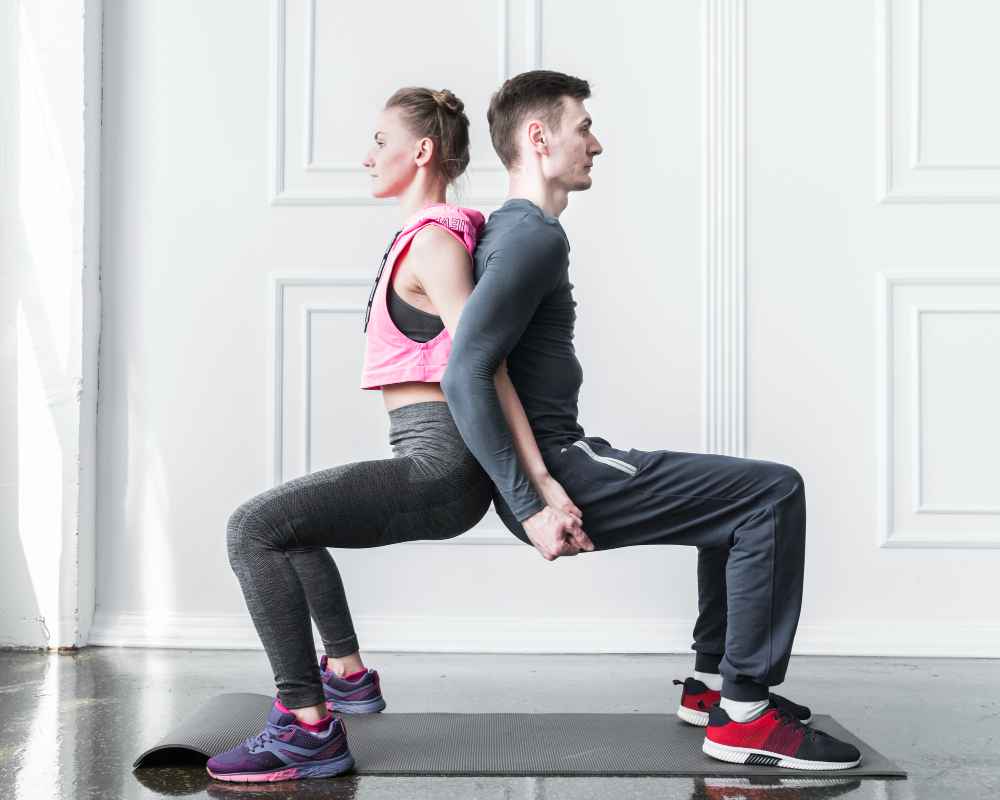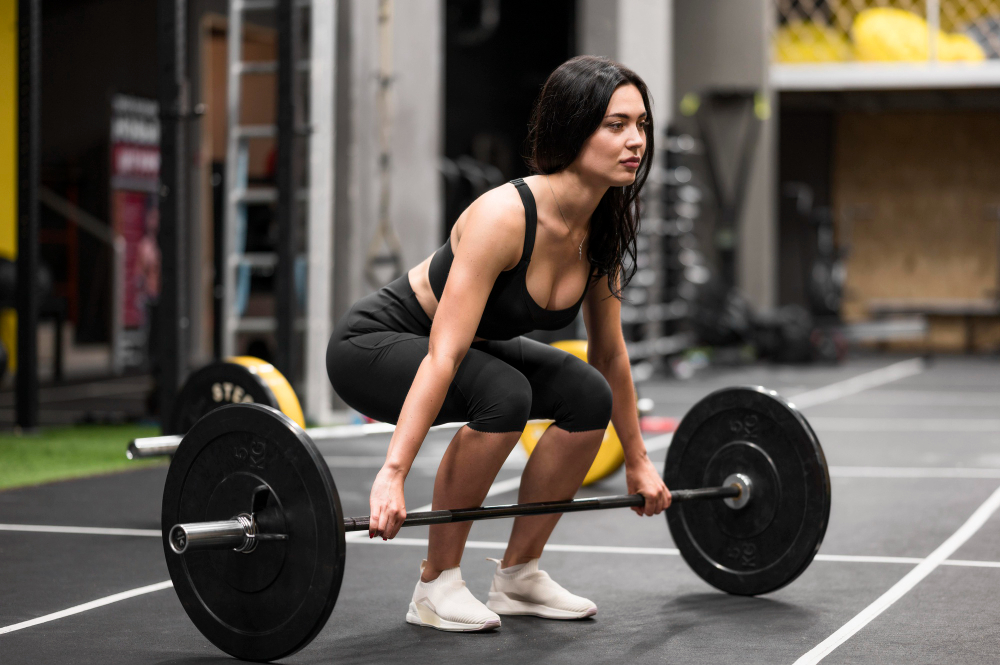LEARN HOW TO DEADLIFT
Learn how to deadlift if you enjoy picking things up and putting them down. When it comes to growing strong and gaining muscle, deadlifts are the lower-body pulling exercise that offers the best value out of all the basic strength-training exercises.
Sadly, many fitness fanatics avoid deadlifts because the name implies that they are daunting. However, with the assistance of this how-to manual, you will learn the proper deadlifting technique to ensure secure and stable strength growth. The greatest method to learn the deadlift is through progression. We’ll start with the most fundamental moves to get you comfortable before moving on to more complex variations.
Step 1: Learn how to hip hinge.
Learning how to set up correctly, which calls for a hip hinge, is the first step in mastering the deadlift. The two most frequent errors made when setting up for a deadlift are rounding the lower back and bending the knees excessively.
Firstly, if done correctly deadlifts are not bad for your lower back. Second, deadlifts are not the same as squats. To be in the best posture to use your glutes, hamstrings, and core to move the weight, you must sit your hips backward with a slight knee bend.
Try the wall hip hinge drill to groove this hip hinge pattern:
- Place your feet hip-width apart, heels about a foot away from a wall.
- Place a small bench or hurdle over your feet, where your shoelaces would be.
- Slightly bend your knees and puff up your chest without arching your lower back.
- Sit your hips back gradually and lower your torso toward the floor until your buttocks touch the wall. Don’t allow your knees to shift forward and collide with the bench/hurdle. Your hips should be higher than your knees at this point.
- Straighten your legs and squeeze your glutes to return to the starting position.
A quick reminder: All hip hinge movements are best performed with flat-soled shoes or without shoes at all. A heel-elevated shoe shifts the weight too far toward the toes, making it difficult to hinge back into the glutes and hamstrings.

Step 2: kettlebell and dumbell sumo deadlift
It’s time to add some weight now that you’re comfortable with the hip hinge. The sumo deadlift performed with either a kettlebell or a dumbbell is an excellent way to introduce resistance to the hip hinge without resorting to a heavy barbell.
The movement is nearly identical to the aforementioned hip hinge (with a slightly wider stance), but the wall and bench/hurdle can be skipped.
- Stand on the end of a kettlebell or dumbbell with your feet just outside your hips and your toes turned out slightly.
- Repeat the hip hinge described above, but this time reach your arms straight down for the weight.
- If you can’t reach the weight without rounding your back, slightly bend your knees until you can.
- Take an overhand grip on the kettlebell handle or cradle the dumbbell with your fingers underneath the head of the dumbbell.
- Inhale deeply and brace your abs as if you were about to be punched.
- Push your feet into the floor and stand up, making sure your chest and hips rise at the same rate.
- At the top, squeeze your glutes and return the weight to the floor with the same hip hinge movement.
Step 3. Trap bar deadlift
You may quickly run out of weight once you’ve mastered your kettlebell or dumbbell sumo deadlifts. Even small people can quickly surpass 100 pounds, which is the heaviest dumbbell or kettlebell found in most gyms. The trap bar deadlift is the next step.
The trap bar is a barbell with a frame that you can stand inside, keeping your hands by your sides and aligning the load with your center of mass. This results in a versatile deadlift variation that’s easy on the lower back. While trap bars aren’t found in every gym, women exercising they’re becoming more common as heavy strength training becomes less frowned upon. If you’re serious about getting stronger and your gym lacks a trap bar, it’s time to find a new gym.
- Stand slightly narrower than for a sumo deadlift, with the same foot position as the first hip hinge exercise.
- Continue to move your hips in a hinged position, bending your knees only when necessary to reach the handles.
- Once you’ve got the handles in your grasp, squeeze your lats by bringing your armpits toward your hip pockets while gripping the handles.
- Stand up exactly as you would for the sumo deadlift, using the same breathing technique.
Step 4. Barbell Deadlift
With a trap bar deadlift, you can get tremendously strong. Many people would benefit most from continuing to use the trap bar indefinitely. However, once you have mastered the trap bar, switch to the standard barbell.
The gold standard for total-body strength is the barbell deadlift, also known as a conventional deadlift to distinguish it from the wider-stance sumo deadlift. The weight is in front of your body, which necessitates a slightly different approach to ensure the bar doesn’t stray away from you while you’re lifting it. This is the main distinction from the trap bar deadlift.
- Stand with your feet in the same position as the trap bar deadlift, and shins a few inches away from the bar. The bar should rest directly on top of your shoelaces.
- Hang your hips back and slightly bend your knees until your shins touch the bar. If you can’t reach the bar with a flat back once your shins are touching it, stand up and try again with your shins farther away from the bar.
- Grab the bar with hands no wider than your hips. As you approach the bar, your arms should be straight down from your sides.
- With straight arms, pull the bar into your shins and hold it there. As you stand up, continue to actively pull the bar into your body, and don’t let the bar lose contact with your body at any point during the lift.
- Exhale and stand up as you did during the trap bar deadlift.
- Push your hips forward and stand tall once the bar is above your knees. To avoid arching your lower back, squeeze your glutes at the top.
- Hinge your hips back and out of the way to return the bar to the floor. You’re not hinging back far enough if the bar hits the tops of your knees on the way down.
Common problems and solutions
Even with extensive practice, you may encounter technical issues that prevent you from deadlifting properly. Here are some solutions to common deadlift errors.
Problem: Rounded back
Solutions: Use Less Weight
The weight is the number one reason you can’t keep your back flat during the deadlift. Begin light and gradually increase the weight on the bar until you can maintain perfect form. Simply elevating the weights on blocks or mats can make it easier to get into a proper starting position.
Problem: Knee Cave in
Solutions: Narrow your stance or use a band
Deadlifts with your knees out are important for activating your glutes and keeping your knees healthy. You may simply be standing too wide if your knees are caving in. A resistance band wrapped around your knees provides immediate feedback on proper technique. Begin with a light band if you don’t want something so heavy you can’t lift properly.
Problem: The bar drifts away from the body
Solution: Pause deadlifts for the time being
It’s common to see the bar drift away from the lifter’s body during barbell deadlifts. If you don’t keep the bar in contact with your body, much of the stress is transferred to your lower back rather than your legs. Simply adding a pause to the exercise helps you stay in a good position. Perform your normal deadlift setup, but as you stand up, pause when the bar is at mid-shin height. This forces you to keep the bar close to your body.
If pause deadlifts don’t work, try band-distracted deadlifts. Loop one end of a resistance band around the middle of the bar and the other end around a stationary object such as a squat rack.
Nevertheless, don’t give up on deadlifts just because they look intimidating. Follow these progressions step by step, adding weight only after you’ve mastered the technique. powerlifting You’ll be picking things up and putting them down with the best of them if you have patience and discipline.


